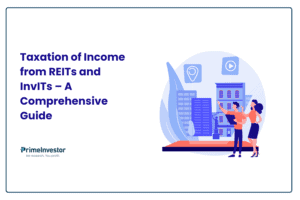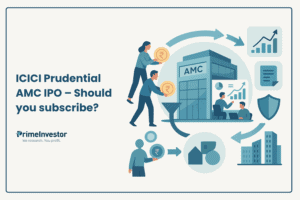I was privileged to be part of the beginnings of the credit rating industry in India. From being an unwanted pest in its early days, the industry is now the favourite whipping boy for regulators and investors, who have blindfolded themselves with wrong notions about the role of credit rating agencies.

The beginnings
John Moody pioneered the concept of credit ratings by giving alpha numeral signs to bonds issued by American companies. The main objective was to provide a guide to investors who were unlikely to be familiar to each and every issuer of debt. He never guaranteed his ratings. He relied on the honesty of his opinion and left it to market forces to either popularize the concept or ignore it. Gradually, the concept of credit ratings got wider acceptance and we eventually had two international rating agencies. We also had a couple of smaller names. John Moody introduced the concept in 1909. It was 1988 before India had its first credit rating agency.
While the service was born much earlier, regulatory oversight of CRAs (Credit Rating Agencies) in the US came in quite late, as late as 1975. A nice overview is available here. In India, CRAs got their first push with the introduction of Commercial Paper as a means of fund-raising by companies. This was at the instance of the RBI. Soon SEBI got into the act with a strange requirement for compulsory rating for public issues of equity – a first in the world where equity was ‘rated’.
SEBI prescribed rules for how the agencies should function, how ratings should be monitored etc. It just stopped short of dictating a set template for assigning ratings.
In India, entrepreneurs are plentiful. So soon after CRISIL was established, two other agencies came up. Then an international one and then a couple of small ones, all of which were ‘recognised’ by SEBI. SEBI did not stop with mere accreditation, though. It prescribed rules for how the agencies should function, how ratings should be monitored etc. It just stopped short of dictating a set template for assigning ratings.
But it turned out that SEBI gave away recognition to CRAs too easily. Institutions that had captive business, private firms with no background were given recognition and there has been compromise in the rating standards. This has given the concept of credit rating itself a bad name. Spectacular defaults like the principal write-off of Yes Bank AT1 bonds, the defaults at DHFL and now the goings-on in SREI, have turned the spotlight back on CRAs and their integrity.
Credit ratings are opinions. The record of the large two CRAs in India has been good and the default analysis of ratings assigned by CRISIL / ICRA would stand up to global standards and scrutiny. Unfortunately, though, the ratings business is like the restaurant business. When the food is satisfactory, no one says anything. One bad day in the kitchen and the restaurant loses all its carefully built reputation.
Issuer pays – no alternative
In late 2001, the largest credit rating agencies maintained an investment grade rating on Enron debt after its major financial restatements and until four days before Enron declared bankruptcy. The 2008-09 crisis was preceded by liberal ratings on structured debt obligations. The subsequent collapse of Lehman and many others didn’t help the cause of CRAs.
At the heart of the matter is the ‘issuer pays’ model of business. This implies that there is an inherent conflict. Since the issuer pays the fees, there could be a reason for giving the issuer a rating higher than warranted. This has been the pet peeve of the critics. Add to this the fact that in the US the two agencies cover more than ninety percent of the ratings business, the high profitability of the CRA business model, there are constant attacks on this business, questioning its integrity.
At the heart of the matter is the ‘issuer pays’ model of business. This implies that there is an inherent conflict.
On the business model, I do not see any alternative.
A subscriber or investor-pay model in my view will not work. In these days of electronic information highways, one person can subscribe to the CRA’s opinions and the information will become public knowledge. I also think that the problems have arisen in India with one or two agencies and not with all. Some CRAs try to undercut others and this enables the issuer to ‘shop’ for ratings. Clearly, a couple of agencies do not deserve to retain their accreditation by the regulator.
Missing qualitative element
As regards big-name defaults, there are two things. One is a possible compromise of standards and the other is structured fraud. Something like Enron / IL&FS would fall into the realm of structured fraud and it is extremely difficult for any auditor or agency to get it right.
However, in my personal view, ratings also succeed or fail based on the qualitative inputs that go into them. Here’s a personal experience. In the early days at CRISIL, we had a team that brought to the table years of experience from the industry. Most of us had knowledge about promoters, could dig out ‘soft’ information and ensure that we incorporated this into the final rating.
Similarly, we had a Ratings Committee that had highly experienced intellectuals from the corporate world. This ensured that we did not depend on pure financials or public perception whilst assigning a rating. Our Ratings Committee meetings used to be sometimes like a battleground, with almost everyone playing the devil’s advocate.
We used to discuss promoter integrity at length and that would often cap the credit rating based on these discussions. Many businesses were not happy with the ratings and chose not to use it. Of course, by the time there was regulatory compulsion, we also had multiple CRAs which led to not just competition, but also eventually to a dilution of standards.
I firmly believe that beyond a firm’s financials, there is a very subjective element that has to go into the rating. The definition of credit rating includes the term ‘willingness and ability’ to pay interest and repay principal. Ability is a numeral and objective thing, provided we can really go deep into the issuer’s numbers. But ‘willingness’ is a subjective factor that can be assessed only through experience.
Today, I find this wanting. And that is surprising given that in our days, compensation packages were modest while now rating agencies are rolling in money and can hire the best talent that is available. Companies may dress up balance sheets, fool auditors and the capital markets. But a CRA has to be able to pierce this veil and assign ratings after considering the ‘soft’ factors.
Ability is a numeral and objective thing, provided we can really go deep into the issuer’s numbers. But ‘willingness’ is a subjective factor that can be assessed only through experience.
No guarantee
The other side is the users. Credit rating is an opinion. It is only a tool for discovery. It is not a guarantee of safety. As they say, ratings are valid till changed. It is a best effort ‘opinion’ based on available information. But we find institutional investors blaming CRAs after picking up bad names.
An institutional investor is supposed to do his own due diligence. Unfortunately, some fund managers act like investment bankers, help structure a debt instrument and buy it in different schemes. Secondary market trades show a pricing difference based on the identity of the rating agency, for identically rated paper. Clearly, a fund manager or a professional investor can only use a CRA as a path-finder and nothing more than that.
Stock brokers and research houses publish stock recommendations which are essentially like rating opinions. I do not see the regulator taking any action against them if the share price tanks or the company turns out to be badly governed. Probably equity causes far more losses than debt. But the regulator has a different set of rules for the two. Clearly, the CRAs have to learn a lot from the lobby of the Dalal Street brigade.
Credit rating is an opinion. It is only a tool for discovery. It is not a guarantee of safety. As they say, ratings are valid till changed.
As regards the retail investor, it is often a question of ignorance and a chase for high yields. A company with something to hide generally does go to the most ‘manageable’ agency and offers a higher rate of interest on its paper than what is the norm for that rating. If a retail investor is serious, he should limit his choices based on which CRA has assigned the rating.
If I ‘discover’ a new entity with a decent rating, I also try and find out who owns and manages the business. If I want to place a FD or buy a bond, I also try and find a company where it is geographically possible to follow up in case of need. For those who cannot do this, the least they can do is to limit their options to choosing debt rated by CRISIL and ICRA – the top two agencies. This is my personal view.
The regulator also should refrain from micromanaging CRAs. The marketplace is the best judge. If a CRA regularly does wrong or goes wrong, investors will automatically ignore its opinions leading to loss of credibility and business. It may not be a bad idea for the Trustees of the MFs to sit down and determine which CRA to depend on and which to avoid.
Those in the business know that all Triple-As are not the same. As to companies that left big holes in investors’ pockets due to debt defaults, the marketplace of professional investors surely knew beforehand of quality issues. If they say they depended on the rating etc., they are altering the truth.
Let us take rating agencies as opinion givers. They just enable us to make a short list. Since it is our money when we invest, we cannot shift the blame. A rating is not a guarantee and not all rating agencies are the same.







2 thoughts on “What they don’t tell you about credit ratings”
Nice article.
But in all these “failures” by the rating agencies, they somehow don’t seem to have been punished. Would it make them more responsible if they knew they could be a penal action on them like what SEBI has done for mutual funds after Franklin Debt Schemes failure (teeth in the game). Though CRAs are only giving “guidance” and “opinions” a lot of investors have tended to believe their ratings (maybe for a lot of reasons – including a possible lack of financial information that the CRAs would have access too).
Incidentally, it seems that none of the auditors have also “caught” the financial wrong doings of these failed companies. Maybe the ICAI also needs to look into the “clean chits” by the auditors?
Apologies if my comments fail to meet your guidelines/policies
Great article !! credit ratings should be taken with handful of salt than a pinch of it.
As a retail investor, it really doesn’t matter to dissect if fault lies with promoter ( inputs provided v/s ability OR willingness to pay v/s fraud) or CRA ( diluted standards v/s ignorance v/s more fees equals to higher rating practices) OR AMC ( taking CRA rating at face value) because, at the end of the day, I loose my hard earned money. If I am willing to take risk, equity offers better rewards than credit risk funds.
Comments are closed.